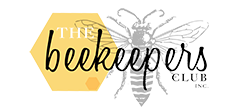Join the Community Gardeners at St John's in participating in the Wild Pollinator Count on Sunday 15 April 2018 at 11:00am. It will only take 10 min, but we can also enjoy meeting the gardeners and sharing a cup of tea.
- You don’t need to be an insect expert
- You don’t need fancy gear
- You may be surprised by what you see! (refer to note below*)
From the Wild Pollinator Count Website
https://wildpollinatorcount.com/
Australia has lots of wild pollinator insects that are often overlooked. Many native insects contribute to pollination in crops and gardens all around the country. We still need to do a lot of research to identify all our pollinator insect species, understand their ecology and how they are affected by human activities. So far, we know that Australia has around 2,000 native bee species, all of which are important pollinators. We also know there are a couple of thousand butterfly, wasp, fly, moth, beetle, thrips and ant species, some of which are documented pollinators. Unfortunately, we don’t have a lot of information on the ecology of many of these insects, what flowers they pollinate, or where they are found.
Instructions (more information on the day)
Find a flowering plant or tree in the grounds. You need to tell us what the plant is, so make sure you know the common or scientific name. Choose a single large flower, or a group of smaller flowers within your visible range. Watch the flowers continuously for 10 minutes. Record any insect that visits the flowers and moves around on the stamens or pistil (the flower’s reproductive parts).
We hope to have some knowledgeable people on hand to help identify the plants and also someone to try and photograph any pollinators. Also some reference pictures of local native bees.
* I was at the community garden yesterday, doing a little bee work. Afterwards, while discussing whether there would be any pollinators about at this stage of autumn, we saw 2 blue banded bees working the flowers. I've never observed them in the field before. How exciting!
Photo above: blue banded bee (Amegilla) By Chiswick Chap (Own work) [CC BY-SA 4.0 (https://creativecommons.org/licenses/by-sa/4.0)], via Wikimedia Commons
